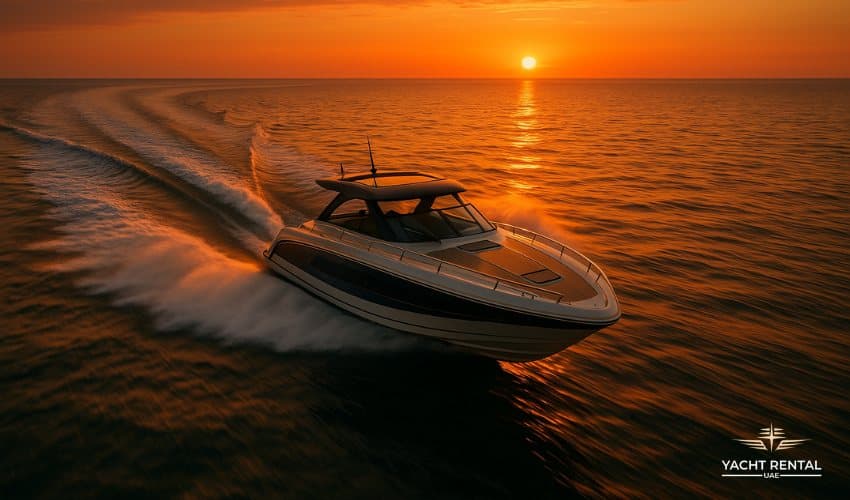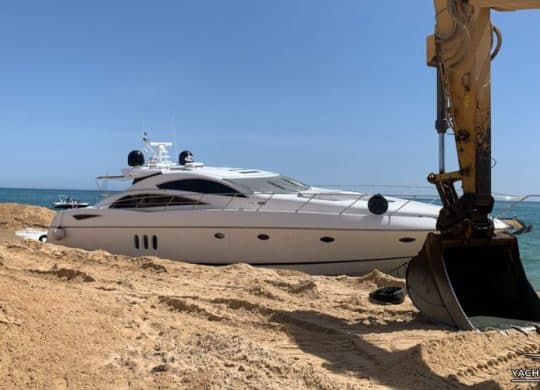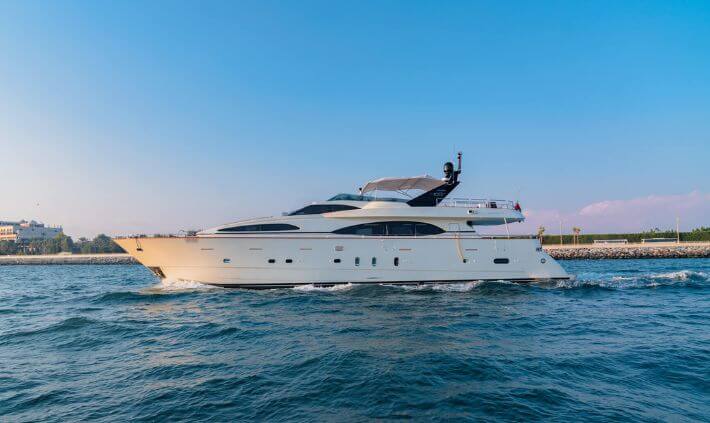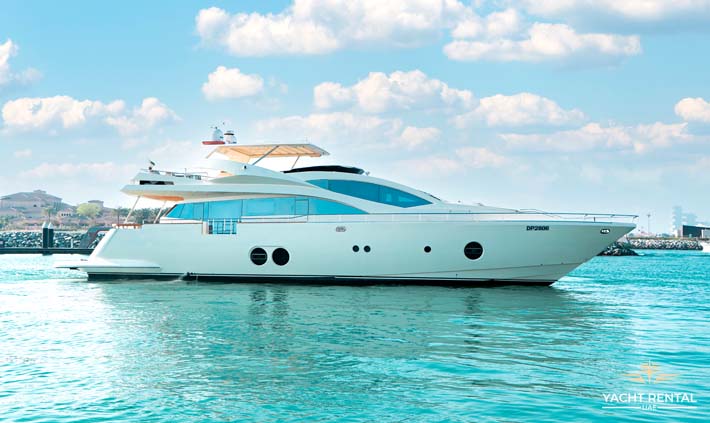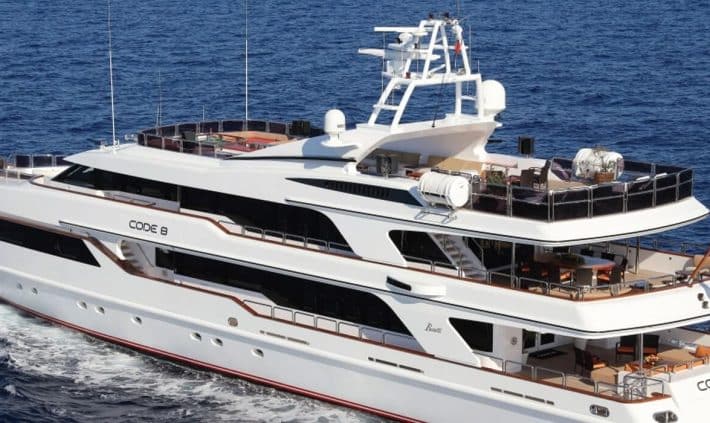Beam Overall (BOA) vs. Waterline Beam (BWL)
Let’s first define the beam of a boat called Beam Overall (BOA), which is the maximum width of the hull, including the rub rail or any other fixed element that extends from the sides. This dimension is critical for determining trailering requirements and fitting into a marina slip.
In contrast, the Waterline Beam (BWL) is the width of the hull measured at the water’s surface when the boat is loaded. Naval architects use BWL for crucial performance calculations, including stability and displacement, as documented in foundational texts like “Principles of Naval Architecture” by the Society of Naval Architects and Marine Engineers.
The Standard Method for Measuring Maximum Beam
To correctly measure a boat’s beam, one stretches a measuring tape from the outermost point on one side to the outermost point on the other. This measurement should occur at the widest part of the vessel, perpendicular to the hull’s centerline. For an accurate BOA, this measurement must include any protrusions like rub rails.
An inaccurate beam measurement can lead to incorrect slip assignments or legal issues during road transport.
How Beam Governs a Boat’s On-Water Behavior
A boat’s beam directly influences its stability, comfort, speed, and fuel efficiency. The designer’s choice of beam width represents a fundamental trade-off between these characteristics. A boat owner can anticipate a vessel’s handling by understanding these relationships.
Stability and Comfort: The Wide Beam Advantage
A wider beam increases a vessel’s initial stability. It creates more resistance to rolling, which often translates to a more comfortable experience for passengers at rest or slow speeds. This is why you see substantial beams on vessels like pontoon boats and many modern cruisers. A wider platform provides more interior volume and deck space, a clear benefit for leisure activities.
Speed and Efficiency: The Narrow Beam Imperative
A narrow beam reduces the hull’s resistance as it moves through the water. With less surface area to push, a narrower hull can achieve higher speeds with the same amount of power. This principle is why high-performance racing boats and fuel-efficient displacement trawlers feature narrow hull forms. The reduced drag directly improves fuel economy, a significant operational advantage for long-distance cruising.
The Length-to-Beam Ratio: A Key Performance Indicator
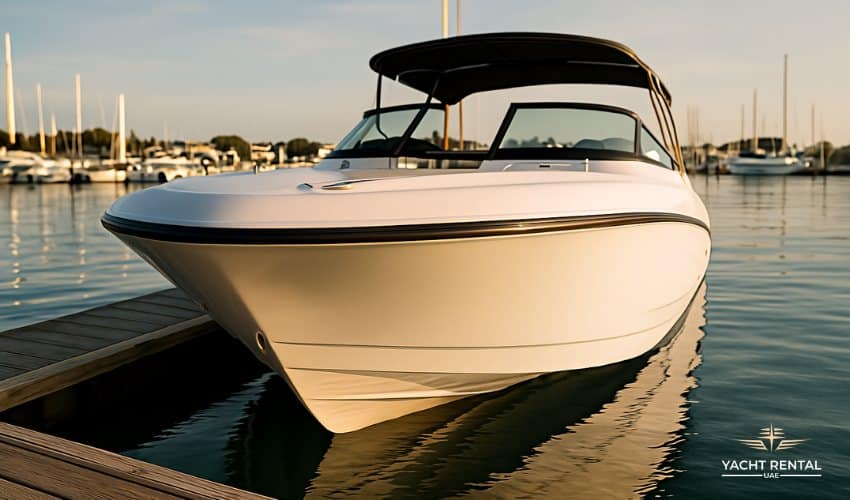
The Length-to-Beam (L/B) ratio offers a powerful insight into a vessel’s intended performance. You calculate this by dividing the boat’s overall length (LOA) by its maximum beam (BOA). The resulting number places the boat on a spectrum from high-speed performance to high-volume capacity.
Calculating the L/B Ratio
The formula is straightforward:
L / B Ratio = Length Overall (LOA) ÷ Beam Overall (BOA)
For example, a boat that is 40 feet long with a 10-foot beam has an L/B ratio of 4.0 (or 4:1). This simple calculation gives a professional a quick way to classify a hull’s design intent without needing to see the vessel.
Interpreting L/B Ratios: From Racers to Trawlers
The L/B ratio indicates the designer’s primary goal. Different vessel types have characteristic ratios.
| Vessel Type | Typical L/B Ratio | Primary Characteristic |
| Racing Catamaran | 8:1 to 14:1 | Maximum Speed, Low Resistance |
| Go-Fast Monohull | 4:1 to 6:1 | High-Speed Planing Performance |
| Modern Cruiser | 3:1 to 4:1 | Balance of Space and Performance |
| Displacement Trawler | 2.5:1 to 3.5:1 | High Interior Volume, Stability at Rest |
Practical and Legal Limits Dictated by Beam
A boat’s beam is not just a design choice; it carries real-world consequences for transportation and storage. Owners should consider these practical limitations before making a purchase. An overly wide boat can restrict travel and increase ownership costs.
Trailering Restrictions: State-by-State Road Regulations
In the United States, the federal government advises a maximum vehicle width of 8.5 feet (102 inches) for use on the National Network of Highways. According to the Federal Highway Administration, states generally enforce this limit, requiring special “wide load” permits for anything wider. This makes a boat’s beam a critical factor for anyone planning to transport their vessel over land. A beam over 8.5 feet may require permits, specific routes, and restricted travel times.
Docking and Storage: Matching Your Beam to Your Berth
Marinas and dry storage facilities categorize slips and racks by length and beam. A boat with a wide beam requires a wider and typically more expensive slip. It is essential to confirm the maximum beam your intended marina can accommodate. A miscalculation can result in an inability to secure a berth or lead to unexpected annual docking fees.
Beam Design Trade-Offs: An Honest Assessment
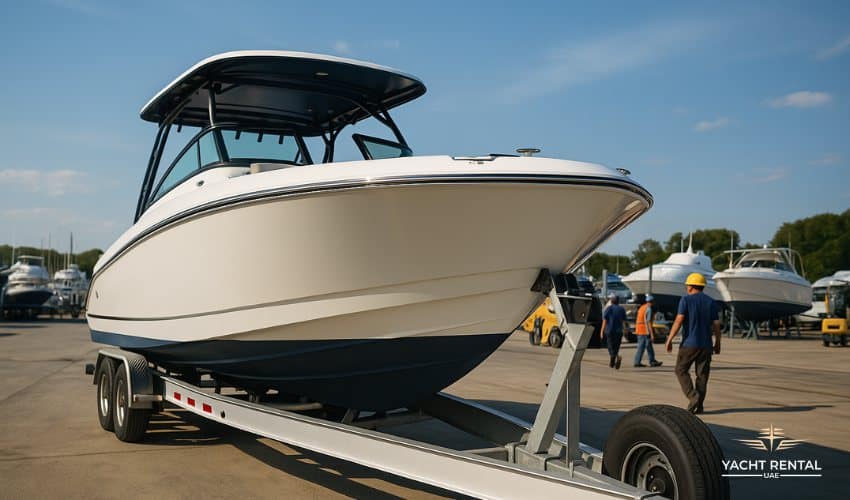
No single design choice is perfect. The decision to use a wide or narrow beam comes with inherent advantages and disadvantages. Acknowledging these trade-offs is crucial for a realistic evaluation of a vessel.
The Risks of Excessive Beam Width
While a wide beam increases initial stability, it can also create a faster, more “snappy” roll period that some find uncomfortable in rough seas. A wider hull also presents more surface area to waves, which can result in a harsher ride in choppy conditions. From a performance standpoint, the increased drag of a wide hull requires more engine power and consumes more fuel to reach planning speeds.
The Downsides of a Narrow Hull Form
A narrow boat, while efficient, offers less initial stability and can feel “tender” or tippy at rest. The reduced width directly translates to less interior volume and a more cramped living space compared to a wider vessel of the same length. For sailors, a narrow hull’s stability relies more heavily on its keel or ballast, a different design consideration than in powerboats.
Final Words About Beam of a Boat
Professionals in the marine industry do not view a beam as a simple measurement of width. We analyze it as the primary determinant of a vessel’s cost-to-operate profile. The industry trend toward wider beams in production cruisers maximizes interior volume, a key selling point for these vessels.
However, this trend conceals a significant hidden cost: the exponential increase in horsepower required to overcome the added hydrodynamic drag from that extra foot of beam.
Before acquiring any vessel, your next step should be to calculate the L/B ratio and compare it to its direct competitors. A boat with a significantly lower L/B ratio than its peers will almost certainly have higher fuel consumption for the same speed.
Also Read: What is the Stern of a Boat
Frequently Asked Questions About Beam of a Boat
What is a good beam for a boat?
A “good” beam depends entirely on the boat’s intended use. For trailering without special permits, a beam of 8.5 feet or less is ideal. For maximizing interior space and stability at a dock for a coastal cruiser, a beam of 12-14 feet on a 40-foot boat might be preferred. For long-distance efficiency, a narrower beam is superior.
Does a wider beam make a boat more stable?
A wider beam increases initial stability, which is the resistance to rolling from a level position. This makes it feel stable at the dock or in calm water. However, it does not guarantee stability in all conditions. The hull shape, weight distribution, and other design factors determine a boat’s overall seakeeping ability. A wider boat can have a quick, uncomfortable roll motion.
How does a beam affect a boat’s value?
Beam affects value through utility and operational cost. A wider beam increases usable space, which can add to its value as a leisure platform. However, a beam exceeding 8.5 feet can reduce the pool of potential buyers who require a trailerable vessel. Wider boats also incur higher costs for marina slips and storage, which can influence their market appeal.

